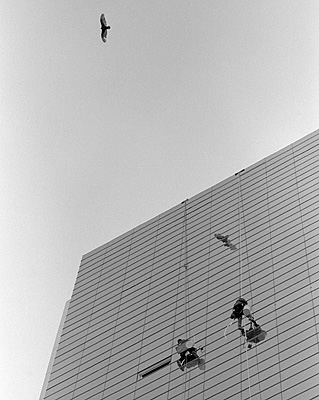Well, Lex is right. If I didn’t watch reruns of reruns, I’d read more. (And maybe post more, too, but I don’t know.) I might have gotten more done if my middle daughter hadn’t decided to get engaged. My husband, on the other hand, has read his Christmas gifts already, so I asked him to do my year’s end book duty.
The Arnoldian says:
My favorite Christmas gifts this year were two books from my wife. One was a recently published work, The Cube and the Cathedral, by George Weigel, a Catholic theologian. The other one was published a few years ago–Modern Culture, by Roger Scruton, who is often described as a “conservative” critic and popular philosopher. Both books are in fact about that elusive topic “culture,” something I have a special interest in because of my research on the nineteenth-century British critic Matthew Arnold, whose Culture and Anarchy was very influential in promoting the sense we have of culture as “the pursuit of excellence” through imaginative literature and the arts. In the tradition of Arnold, Scruton is a secular writer who has a profound respect for the Christian heritage.
Please don’t get the idea that our family spends the Christmas holiday just sitting around reading books. We have various ways of celebrating this “merry” time, but in this case I did find time to finish the two books within a few days after receiving them. It seemed so appropriate because they obviously complemented each other (coming from institutionally religious and secular points of view) and both of them, as I’m sure my wife intended, very much in the “true spirit of Christmas.”
Weigal, like his mentor, John Paul II, of course believes that Christianity still plays a vital role in modern Europe but he is distressed by the anti-Christian sentiment that is so prevalent there today. For example, there are references to the classical heritage but none to Christianity in the new EU constitution (all Hellenism and no Hebraisim, as Arnold might put it), and many Europeans seem to be ashamed of their religious background–an understanding of which is in fact fundamental to understanding European history. It is maybe fanciful but not absurd to imagine a future Europe in which Islam, nurtured by Islamic immigrants and their descendants, continues to grow while Christianity nearly fades away, or ironically, is revived by missionaries from Africa and Asia.
It is not a coincidence that the native European population is declining rapidly in this “post-Christian” era. Secular atheists of various ideologies in the past couple of centuries have striven to “liberate” human beings from repressive religious mythology. But in a real sense, it is the commitment to a moral purpose associated with a religious vision that liberates us from a slavery to our selfish whims and animal appetites. Religion connects us with the dead and the unborn. Without it, it is easy to feel that we are living in the present, “free” to live out our short, meaningless lives. Scruton mericlessly analyzes the absurdities of both pop culture and academic postmodernism. Not much chance of finding a substitute for traditional relgion there. With all this in mind, we can begin to think about serious implications underlying the sometimes silly-sounding arguments we heard in our own country this year about “the war against Christmas.”
Beyond our concerns as individuals and as members of families, tribes, and nations, Christianity opens up the vision of universal humanity. No doubt images of Jesus can be used to reinforce local cultural affiliations but the grand idea behind him is that all people all over the earth (even Europeans?) have one Father and are all part of the same family.

